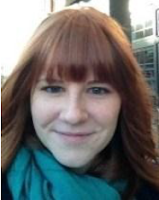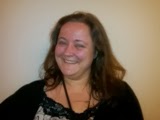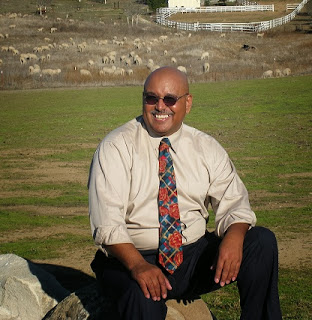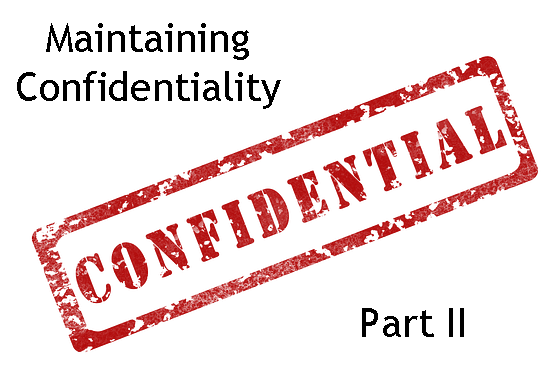Writing Through Fear
I suppose
fall is the perfect time to discuss fear. The leaves are falling, the nights
are getting longer, and the kids are preparing ghoulish costumes and tricks for
Halloween.
So here’s my scary story: A few weeks ago, I sat down at my computer to revise an essay draft for an upcoming deadline. This is old hat for me; it’s what I do in my personal life as a creative writer, and it’s what I do in my professional life as a Walden Writing Center instructor. As I was skimming through it, though, a feeling of dread settled in my stomach, I began to sweat, and my pulse raced. I was having full-on panic. About my writing.
3. Give it a rest. This was my approach. After realizing that I was having an adverse reaction, I called it quits for the day, which ultimately helped reset my brain.
4. Find comfort in ritual and reward. Getting comfortable with writing might involve establishing a ritual (a time of day, a place, a song, a warm-up activity, or even food or drink) to get yourself into the writing zone. If you accomplish a goal or write for a set amount of time, reward yourself.
5. Remember that knowledge is power. Sometimes the only way to assuage our fear is to know more. Perhaps you want to learn about the writing process to make it less intimidating. Check out the Writing Center’s website for tips and tutorials that will increase your confidence. You can also always ask your instructor questions about the assignment.
6. Break it down. If you feel overwhelmed about the amount of pages or the vastness of the assignment, break it up into small chunks. For example, write one little section of the paper at a time.

Writing Instructor and Coordinator of Undergraduate Writing Initiatives Hillary Wentworth works and writes from her home in Portland, Maine. When she's not at a computer, she likes to read, roller skate, and travel to new places.
So here’s my scary story: A few weeks ago, I sat down at my computer to revise an essay draft for an upcoming deadline. This is old hat for me; it’s what I do in my personal life as a creative writer, and it’s what I do in my professional life as a Walden Writing Center instructor. As I was skimming through it, though, a feeling of dread settled in my stomach, I began to sweat, and my pulse raced. I was having full-on panic. About my writing.
This had
never happened to me before. Sure, I have been disappointed in my writing,
frustrated that I couldn’t get an idea perfectly on paper, but not completely
fear-stricken. I Xed out of the Word document and watched Orange Is the New Black on Netflix because I couldn’t look at the essay
anymore. My mind was too clouded for anything productive to happen.
The
experience got me thinking about the role that fear plays in the writing
process. Sometimes fear can be a great motivator. It might make us read many
more articles than are truly necessary, just so we feel prepared enough to articulate
a concept. It might make us stay up into the wee hours to proofread an
assignment. But sometimes fear can lead to paralysis. Perhaps your anxiety
doesn’t manifest itself as panic at the computer; it could be that you worry
about the assignment many days—or even weeks—before it is due.
Here are some tips to help:
1. Interrogate your fear. Ask yourself why you are afraid. Is it because you fear failure, success, or judgment? Has it been a while since you’ve written academically, and so this new style of writing is mysterious to you?
2. Write through it. We all know the best way to
work through a problem is to confront it. So sit at your desk, look at the
screen, and write. You might not even write your assignment at first. Type
anything—a reflection on your day, why writing gives you anxiety, your favorite
foods. Sitting there and typing will help you become more comfortable with the
prospect of more.
3. Give it a rest. This was my approach. After realizing that I was having an adverse reaction, I called it quits for the day, which ultimately helped reset my brain.
4. Find comfort in ritual and reward. Getting comfortable with writing might involve establishing a ritual (a time of day, a place, a song, a warm-up activity, or even food or drink) to get yourself into the writing zone. If you accomplish a goal or write for a set amount of time, reward yourself.
5. Remember that knowledge is power. Sometimes the only way to assuage our fear is to know more. Perhaps you want to learn about the writing process to make it less intimidating. Check out the Writing Center’s website for tips and tutorials that will increase your confidence. You can also always ask your instructor questions about the assignment.
6. Break it down. If you feel overwhelmed about the amount of pages or the vastness of the assignment, break it up into small chunks. For example, write one little section of the paper at a time.
7. Buddy up. Maybe you just need someone with
whom to share your fears—and your writing. Ask a classmate to be a study buddy
or join an eCampus group.
The writing centers at the University of North Carolina at Chapel Hill and University of Richmond, as well as the news site Inside Higher Ed, also have helpful articles on writing anxiety.
Other posts you might like:

Writing Instructor and Coordinator of Undergraduate Writing Initiatives Hillary Wentworth works and writes from her home in Portland, Maine. When she's not at a computer, she likes to read, roller skate, and travel to new places.
Faculty Spotlight: Dr. Pettis Perry (Part 2)
When we asked Dr. Pettis Perry to answer our faculty spotlight questions, he responded with a treasure trove of insights—so much so that we decided to break his response into two parts. Click here to read Part 1, and enjoy Part 2 below! |
| Dr. Pettis Perry, Ed.D., is a core faculty member and program coordinator of the Master of Science in Leadership Program. |
How does your own
experience as a writer inform your work with student writers?
The most significant shaping experience came from my father,
who only completed 15 months of formal education but taught himself how to read
and write. When I asked my dad how to spell a word, he would tell me to get the
dictionary and we looked up the word together. I learned that not understanding
something was not an excuse for failure, and I also learned to keep a
dictionary handy, which I do to this day.
A second experience that shaped my work with students was
that I failed every writing proficiency test I took. Over time, I discovered
that sitting down to write about a foreign subject did not allow my brain
sufficient time to process the information so that I could use it. Once I began
to understand how I processed information, I adjusted my approach to my school and
professional work.
My favorite teacher from my Jesuit training required us to
write single-page papers regardless of the amount of reading. This forced me to
learn how to write much more effectively and with greater impact. I was also
inspired by the lack of feedback I received from many of my instructors over
the years. My response was to make a personal commitment that if I ever ended
up in a classroom, I would do everything I could to help students.
Recently, I remembered my high school counselor telling me
that I shouldn’t consider going to college because I would not succeed, and the
difficulties I had with writing assessments seemed to reinforce that opinion.
However, by the time I presented my dissertation, a committee member commented
that my dissertation was one of the best he had seen in 20 years of teaching.
What advice do you
have for faculty who want to help their student writers?
Clearly articulate your expectations and provide substantive
content feedback as well as technical writing feedback. Consider the student
perspective: We have so much variation in our faculty expectations that it
creates problems for students who are confused as they move from class to
class. Students complain that many of their faculty provided them 100% scores
with little or no feedback, leading them to believe that there wasn't anything
that needed improvement. It is certainly much easier for us as faculty to
simply give students grades rather than forcing them to earn their grades in an
environment of tough academic scrutiny, and it can be potentially more
lucrative in terms of how high grades may relate to
more positive student evaluations and, therefore,
higher faculty performance evaluations. However, who is being helped
when we do this? If we truly want to support our students, then we have to do the right thing by letting students
know when they are doing well and when they need additional support.
What advice do you
have for students who want to improve their writing?
Be willing to embrace critical feedback and learning from your instructors. Even strong writers have things to learn in order to write more effectively. Seek feedback when it’s not provided, and focus on the learning rather than the GPA. Cultivate relationships with your instructors by asking questions and seeking understanding regarding the logic of your grades, and seek out those who will give you honest and tough feedback rather than feedback you want to hear.
Work on language skills every opportunity you get. Practice them during every discussion, application, presentation, or memo.
Be patient with yourself as you journey through your degree. Remember that the formal education process is a demanding process that requires a substantial time commitment over a finite period. Informing friends and family members about those commitments can open up scheduled time for writing and completing assignments. Create holes in your schedule, such as working on assignments while using public transportation, during work breaks, or after putting children to sleep.
Since writing requires synthesizing and communicating
information, create a system for managing information consumption, reflection
time, and writing time. For example, the MSL program follows a day 3-7 posting
schedule. This creates opportunities for completing all of the required reading
during days 1-2. Do the reading in order of how the materials will be used for
each assignment, which gives your brain an opportunity to process the
information in preparation for using it sequentially.
Take some time to become familiar with your designated
writing manual. Review the table of contents and the example papers, but live in the index. Only
submit your best work and take ownership of the work you submit. Everyone is
busy, so none of us can use that as an excuse for the quality of the work that
we submit. Remember, your ideas belong to you.
Be excited about your education journey and passionate about
your subject, and you will find it easier to sustain momentum. There simply
isn’t any substitute for a positive attitude and passion about your work. In
fact, when we are passionate about the things we do, we generally do not see
the effort as drudgery but rather as an investment in something we truly enjoy.
Whether a leader is seen as credible is closely tied to his
or her ability to use language effectively. Leaders have to be able to
communicate to a wide variety of stakeholders, such as employees, board
members, customers, or vendors. In order to adjust their message effectively,
leaders have to be able to communicate using a variety of mediums that require
the ability to write well.
Functionally, the smaller the organization, the more the
leader has to do to produce reports and correspondence. When leaders are unable
to communicate clearly, concisely, and effectively, they inadvertently produce
dysfunction within their organizations. The ability to communicate effectively
will make the difference between success and failure, not only for the leader,
but for the entire organization.
What’s something
about you that would surprise your students?
I used to collect movies and
recently had to get rid of more than ¾ of my collection (about 350 movies)
because of a lack of space in my new home.
Other posts in our Spotlight series:
Faculty Spotlight: Dr. Pettis Perry (Part 1)
Faculty Spotlight: Dr. K. Elizabeth McDonald
Student Spotlight: Mary Eldredge-Sandbo
Faculty Spotlight: Dr. Pettis Perry (Part 1)
This faculty spotlight features Dr. Pettis Perry, Ed.D., core faculty and program coordinator of the Master of Science in Leadership Program. When we asked Dr. Perry to answer our faculty spotlight questions, he responded with a treasure trove of insights—so much so that we decided to break his response into two parts. Enjoy Part 1!What are the most common writing challenges for your students?
Becoming familiar
with the rules of the game.
Writing is both a science and
an art; it has to be approached both technically and creatively. The science
encompasses all of the rules of the game
associated with writing according to the writing style being used (APA, in the
case of Walden) and expectations established by the academic program. For
example, the MSL program is an applied theory program, so in addition to
language usage and formatting, the rubrics
contain assessments for how well the theory was applied, content accuracy, how
well the narrative was organized, critical thinking, and creativity. The art of writing encompasses the ability
to convey ideas fully, clearly, concisely, and interestingly. Students sometimes
have difficulty here because it is so dependent upon strength of language
skills and the creative centers in the brain.
Learning the language and subject matter of the discipline.
Learning the language of the discipline (subject matter) that
is being studied is fundamental to communicating effectively and authoritatively.
The way to learn the language of the discipline is much like learning anything
new: A writer must use the words and phrases that structure the language of the
subject. With practice, the degree of familiarity with the language and subject
matter will come through in how we communicate our ideas.
Owning your current
skills with a thirst to grow developmentally.
 The willingness to own
our current writing skills is central to learning how to write well. If writers
assume that they write well and have nothing more to learn, they will meet feedback
with denial, frustration, and defensiveness. As frustrating as it might be to
receive substantive content and writing feedback, finding ways to set the ego
aside is crucial to embracing valuable advice. Openly embracing the feedback
may also lead to closer relationships with faculty members who are willing to
work with students when they need additional support.
The willingness to own
our current writing skills is central to learning how to write well. If writers
assume that they write well and have nothing more to learn, they will meet feedback
with denial, frustration, and defensiveness. As frustrating as it might be to
receive substantive content and writing feedback, finding ways to set the ego
aside is crucial to embracing valuable advice. Openly embracing the feedback
may also lead to closer relationships with faculty members who are willing to
work with students when they need additional support.
Creating the time and
space to write.
Finding the time for organizing thoughts and conceptualizing
the narrative before writing can become an overwhelming exercise, particularly
for working parents with young children. Yet, writing well takes time to
construct, proofread, and draft multiple iterations before producing a final
product of which to be proud. Creating the time and space to write may entail
keeping a list of content notes and ideas, writing individual segments of an
assignment as time permits, and then compiling the work into the final document
in a final sitting. Being flexible and creative about how to complete
assignments creates opportunities for completing the work with less
self-imposed pressure.
Learning to
demonstrate critical thinking.
The
MSL program and many other programs at Walden University emphasize the need to demonstrate
strong critical thinking skills as part of becoming a scholar-practitioner.
Critical thinking is defined here as demonstrating the ability to read,
comprehend, synthesize, and use theory-based literature by applying
it to real-world or case study examples.
Demonstrating critical thinking competency requires several skills, such
as (a) identifying a problem by analyzing an operational work environment, personal
experience, or case study; (b) identifying and discussing the applicable
theory that might help explain what was observed; (c) selecting a
real-life experience or case study example that is reflective of the theory; and (d) applying the theory to the real-world example to demonstrate how the
theory are applicable.
What
have you done to help your students master those skills?
With student feedback, I created a course guide titled My Course Survival Guide, which I post
in doc sharing for students to download. The guide covers a range of topics,
including my expectations, helpful writing tips, and some of the more important
APA rules with examples.
The feedback that I provide is intended to assist students
with communicating their ideas more clearly, concisely, and powerfully to
maximize the impact of their communications. The idea is to help them create
what I refer to as bulletproof arguments
that will withstand counterarguments and also to prepare them for their
capstone documents. My bias is for how
things are communicated rather than towards the direction of the narrative
itself. Therefore, I provide substantive feedback regarding the application of
theory and critical thinking and then references to improving technical writing.
When I come across students with language or
critical-thinking deficiencies, I encourage them to contact and work with the
Writing Center, which is a wonderful resource available to all students. As
part of my feedback to students I also download and attach their Grammarly reports
rather than trying to rewrite their papers for them as I used to do. I found
that my attempts to provide detailed writing feedback were overwhelming
students, so I changed tactics. Today, I combine into a single PDF document the
graded paper, rubric, and Grammarly report so that the student has everything in
one place.
I
also make myself available by telephone. One of the positive outcomes of this practice is that
the conversations not only answer questions and lead to increased learning, but
they often lead to positive relationships with students that continue beyond
graduation. My expectations are posted in several places in my classrooms.
Whenever I get the chance, I strongly encourage students to cultivate a work ethic
that includes doing whatever it takes to devour the subject resources and to
submit only quality work.
Dr. Perry currently resides in Bellingham, Washington. Look for his insights in Part 2 of this faculty spotlight soon!
Other posts in our spotlight series:
Faculty Spotlight: Dr. K. Elizabeth McDonald
Student Spotlight: Mary Eldredge-Sandbo
Demystifying Narrative vs. Parenthetical Citations
Most of you already know that APA style requires you to cite sources—but perhaps you are confused about how to do so. You may have heard of “in-text citations” and “parenthetical citations” and "narrative citations," but you may not know the difference or feel confident enough to execute them on your own.
So, to put your mind at ease, here are a few common
questions we receive about citations, along with our answers.
What is an in-text
citation?
The term “in-text” refers to any citation in your text. You can use the term "in-text citation" interachangably with "citation."
What is a narrative citation?
A narrative citation is a citation in which the author name appears in the sentence itself, rather than within parentheses. The author name is part of the meaning of the sentence.
What is a narrative citation?
A narrative citation is a citation in which the author name appears in the sentence itself, rather than within parentheses. The author name is part of the meaning of the sentence.
Example:
Nadeau (2013) stated that dogs make unique eye contact with
humans.
What is a
parenthetical citation?
A parenthetical citation is one that contains the required
citation information within parentheses.
Example:
Dogs make unique eye contact with humans (Nadeau, 2013).
How do I know whether
to use a narrative or parenthetical citation?
Is the author’s name grammatically necessary in the
sentence? If yes, use an narrative citation; if no, use a parenthetical citation.
For example, in the example below, the author name “Nadeau”
is grammatically necessary since it forms the sentence’s subject (doer of the
action), thus requiring an in-text citation:
Nadeau (2013) stated that bright lights can make one sneeze.
However, in the next example, the author name has no
grammatical place in the sentence, and therefore should appear within
parentheses, along with the publication year, at the end of the sentence:
Bright lights can make one sneeze (Nadeau, 2013).
Can I use a narrative and
parenthetical citation in the same sentence?
You should never cite any source information twice in the
same sentence.
Example of an incorrect citation:
According to Nadeau, American football is an unusual
sport (Nadeau, 2013).
Because the author name and publication year are already cited at the beginning of the sentence, the parenthetical citation is
unnecessary.
However, if you are directly quoting a source and you choose
to use a narrative citation, the page or paragraph number (which is required
when quoting a source, per APA) will go inside parentheses after the quotation.
Example:
According to Nadeau (2013), “dill pickle chips are rather
disgusting” (p. 3).
Other posts you might like:
APA Citations: The Method to the Madness
What's the Citation Frequency, Kenneth?
Citing an Author Throughout a Paragraph: Notes on a Tricky APA Shortcut
When to Use an Author Name in the Body of a Sentence and When to Keep It in the Parenthetical Citation
Writing Instructor Nik Nadeau lives in Boston, where he loves to read, speed skate, cook, and write about Asian American topics.
Maintaining Confidentiality (Part 2)
In MaintainingConfidentiality (Part 1), I listed a few different places in a capstone
study where you should be careful not to reveal the identity of your study site
or participants, especially inadvertently through citations and documentation
of the research process. This post offers some recommendations for actually
writing about your study site or community partner without compromising
confidentiality (particularly in introductions and discussions of the setting
and participants).
Writing for Positive Social Change Using Louise Dunlap's Undoing the Silence: Six Tools for Social Change Writing
The idea of enabling positive social change is integral to
student work at Walden University. Part of Walden’s mission is to help its students
“enact positive social change,” and Walden’s
vision is for students to use their education for “the greater global
good.” The Writing Center has also
incorporated social change into our mission: “Our staff of dedicated professionals
supports students in building and applying their writing skills as scholars,
practitioners, and agents of positive social change.” Walden’s Global
Days of Service this week prompted me to think more about social change and
how writing can contribute to Walden and the Writing Center’s missions of
social change.
One important component of social change is speaking up.
When we work for social change, we speak up for what we believe is right. This
means making our own voice heard, but it can also include helping others’ voices to be heard. Knowing how
to speak up can be a challenge, particularly when we are working to address
problems and issues about which we are passionate.
Louise Dunlap’s book Undoing the Silence: Six Tools for Social
Change Writing addresses this
idea of speaking up, highlighting the ability we all have to enact social
change through writing. First, however, Dunlap believes that we must address
the ways we are silenced, interrupting
our ability to speak, before we can effectively promote social change. This
silencing can manifest itself in ways that we often don’t recognize:
 |
| Louise Dunlap. Photo (c) http://www.undoingsilence.org |
“I…picture the silencing of our voices as a huge stifling knot, layered together with tangled strands from many aspects of our culture. In this knot, impulses we regard as deeply personal are interwoven and reinforced by the institutions around us” (p. 16).
What Dunlap suggests, however, is that this silence can be
broken through writing. Writing, she says, can give everyone a voice and a way
to be heard.
Undoing the silence is the goal of Dunlap’s book, and throughout
each chapter she explains different tools to achieve this goal. Dunlap explains
tools and techniques we can use at the very beginning of the writing process,
like freewriting and brainstorming, but also tools that can help you consider
the audience for your writing and revising for that audience.
 |
| Photo (c) http://www.newvillagepress.net |
Because of her perspective, I recommend Dunlap’s book to
anyone who aims to have a social change focus in their writing (hint: all
Walden students). If you’re a doctoral student, Undoing the Silence—particularly Chapter
6, “The AUDIENCE Tool”—may help you articulate your social change statement in
your study. If you’re a master’s student, Chapter 5, “The THINKING Tool,” can
help you develop and deepen your ideas. If you’re an undergraduate student, pay
particular attention to Chapter 3, “The FREEWRITING Tool,” to help you generate
ideas.
But, no matter what type of student you are or what kind of
writer, I encourage you to read Chapter 2, “Understanding the Silence.” In this
chapter, Dunlap expands on ways she sees writers being silenced. Understanding
the silence, Dunlap explains, is the first step to breaking the silence, enabling you to better articulate and enacte the social change you want to achieve.
How have you seen writing help you articulate and achieve
social change? How have you broken through the silence to speak for social
change? Let us know in the comments below!
Other posts you might like:How to Write for Positive Social Change
Global Days of Service Week is Coming! #IAmSocialChange
Writing for Change on Earth Day (and Every Day)

Writing Instructor and Coordinator of Webinar Writing Instruction Beth Oyler writes about literature in her spare time and enjoys contemplating the possibilities writing creates.
How to Write for Positive Social Change
We may bandy around the term positive social change so much that it
may start to feel like another requirement, another box to check on the long
list of goals to reach before finishing a degree. Sometimes, in the thick of
course work or individual research, you can start to lose sight of the forest
among the trees. It is important, and even energizing, to step back and reflect
on the ways that the work you do can have a real impact on the world around
you, from the most personal all the way to the global level.
Putting things into words is the
first step before turning those words into action. The writing you do at Walden
is a way for consolidating and refining your vision for the change you want to
see. That’s the powerful thing about writing: It gives us the chance to
articulate not just what is, but what could be. In order to make a better
world, we have to first imagine one.
If you are pursuing a degree at
Walden University that requires you to complete a thesis, dissertation, or
doctoral or project study, one essential element you are required to explain is
how the whole undertaking contributes to positive social change. But what does
that mean, exactly? “Making the world a better place” can seem like a vast and
overly vague enterprise. You may feel overwhelmed by being asked to explain how
what you’ve been doing at your desk, alone in the library, or on your computer in
your precious free moments could amount to something that could change the
course of other people’s lives—but that is exactly what you are meant to do.
 |
| image (c) http://www.besocialchange.com |
Social Change Implications: Challenges and Approaches
One trap that writers can fall
into is overstating the implications of their work to the point beyond what a
generally informed reader would find logical. Be sure that the claims you make
about your research fit the scope of what you can accomplish in a single study.
If you are studying the relationship between effective management strategies
and better client outcomes at a nonprofit organization for runaway adolescents,
you will have a hard time convincingly arguing that your study will directly result
in the eradication of teen homelessness worldwide—that’s a problem that is just
too big for you to tackle alone. Remember that your study is one drop working
together with many, many other drops all flowing in the same direction. Add up
all those drops, and pretty soon you have a wave starting to carry things
along.
The other mistake writers make is
to understate or even diminish the study’s potential for positive impact for
the very reason that the problem is too big for one person to take on; it’s just
one little study, so how could it have any effect on how things get done in the
rest of the world?
At a recent residency, a woman
was describing to me her research proposal. She wanted to investigate
strategies for helping kindergarten students in her school district who were
underprepared at the beginning of the school year so that they would be better
able to learn to read alongside their peers. “I’m really passionate about this
issue,” she told me, “but I don’t know what it has to do with positive social
change.”
Here’s the key to explaining your
study’s implications for social change without over- or understating them—start
with the tangible impact this new
knowledge will bring and with the one individual or group of individuals you
know will specifically benefit, and then see how far the wave crashes.
“Well,” I said to this student,
“it might be helpful to start thinking about who would specifically benefit
from your study and in what way.”
“You mean, why is it important
for children to learn to read?” she said, sort of laughing.
Stopping to think through how her
work was going to help the teachers and students in her study helped her see
right away how those benefits could ripple out to the rest of the community. Strategies
to improve literacy at an earlier age would help students achieve more success
as they progressed through school, giving them more educational opportunities.
Investigating the effective strategies could help educators bring the benefits
to other schools and communities as well. No, she wasn’t going to solve the
problems with literacy preparation in the education system in one study, but
she was going to add an important drop to the wave moving things in that
direction.
Creating a Wave of Positive Social Change, One Drop at a Time
I am proud of Walden’s commitment
to promoting positive change in the world. Whether it is in discussions with
colleagues or interactions with students, the feeling is utterly palpable that
everyone is genuinely interested in leaving whatever they touch a little better
than they found it. As students, you commit your time and resources and
dedicate months—often, years—of your lives pursuing degrees and researching
topics that you will then use to help those around you and others in your field
to progress and improve.
If it starts to get hard to see
how the research you’re doing could realistically change the course of human
events, or how one letter to the editor or discussion post could realistically
change another person’s mind, just remember that your voice is one voice among
many. One little drop may not seem as if it can do much on its own, but the
resulting waves can carve and re-carve the very surface of the globe.
Other posts you might like:
Global Days of Service Week is Coming! #IAmSocialChange
Writing for Change on Earth Day (and Every Day)
Other posts you might like:
Global Days of Service Week is Coming! #IAmSocialChange
Writing for Change on Earth Day (and Every Day)
 Seeing the variety of social change projects Walden students pursue is one of Dissertation Editor Lydia Lunning’s favorite parts of reading dissertations.
Seeing the variety of social change projects Walden students pursue is one of Dissertation Editor Lydia Lunning’s favorite parts of reading dissertations.
Subscribe to:
Comments
(
Atom
)













11 comments :
Post a Comment